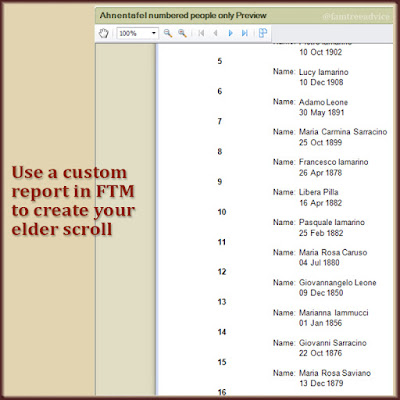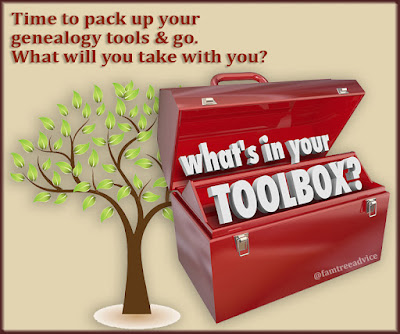The industry is reporting layoffs as the DNA kit surge reaches its peak.
Should genealogy fans worry about the future of DNA tests? Ancestry cut 6% of its staff. 23andMe cut 14%. MIT Technology Review says more than 26 million people submitted DNA ancestry kits, with a huge spike since 2017. There was such a rapid increase of kits in the last 2 years, it's surprising to read about these staff cuts.
Whoever is in your DNA match list today, you shouldn't expect a tremendous increase in the future. And the reason so many of your DNA matches have no tree or don't answer you is simple. They aren't interested. The kit was a gift, they went along with it, they saw their pie chart and said, "So what?"
This past weekend I worked on one of my 2020 Genealogy Goals. I tried to figure out my connection to someone in my DNA match list who had a family tree. I've figured out a lot of them already. I spent my time working on a 4th cousin who'd reached out to me on Facebook a while back.
 |
| I know the connection is there, but missing documents are keeping it secret. |
I told her that her grandmother's maiden name was my grandmother's maiden name. She was Concetta Sarracino. I found Concetta's 1887 birth record in my vital record collection. I found her 2 siblings, her parents, her aunt and uncle, 3 grandparents, and 1 great grandparent.
 |
| Free to use. |
Now I've got dozens of people in my tree, closely related to my DNA match. But their profile pictures are my "No Relationship Established" graphic. Once again, I had to put this branch aside and hope for a future breakthrough.
As I was about to quit playing with my family tree for the day, someone sent me a message on Ancestry. My family tree kept coming up in her search results over and over. She gave me a handful of names, and I went to her tree.
While her family names are clearly from my grandfather's hometown, she is not in my match list. But she is in my dad's match list. It's a distant relationship. Between the DNA and those last very familiar names, I wanted to know more.
In her family tree I saw 2 last names that are important in my family tree: Pozzuto and Zeolla.
These 2 names seem to hold the hidden DNA connection between my mother and father. I've been trying to find my parents' distant cousin connection by adding those names to my family tree. Last year I added every Pozzuto baby from my vital records collection to my family tree. This year's goal is to add every Zeolla baby.
This past weekend I found that I am connected to this DNA match's great grandmother. I can't see her 1875 birth record because that year is missing from the records collection. But I have her parents' and siblings' records. Filomena Zeolla, born in 1875, is my 3rd cousin 4 times removed.
That doesn't help me figure out my parents' DNA connection. But it does extend my family tree into an area I couldn't reach before. I had no way to know about Filomena because there are no 1875 birth records. I had no way to know she had married a Pozzuto who has a huge branch in my family tree.
Because of this DNA match, I realized I'd attached her grandfather to the wrong parents. Their names were almost identical. I had no way to know!
And this is the importance of DNA matches' trees to me. I don't expect to discover many close relatives. Years ago my family tree (not my DNA) attracted my 3rd cousin to me. I knew nothing about her ancestor—my great grandfather's sister. But now I've built out my 2nd great aunt's branch of the family and extended them into America.
I need my distant cousins' family trees to find out what happened to relatives who scattered across America—or stayed in Italy.
If you want to find long-lost family through DNA, don't despair about the DNA-test market. There are still millions of family trees online and other research that can connect you to 3rd and 4th cousins.
It's the people trying to find their birth parents' who have the most to lose as this DNA-kit fad winds down. On the flip side, more people are afraid to test because they might learn their mom and dad aren't their birth parents.
So, should genealogy fans worry about the future of DNA tests? For most of us, the answer is no. There are still 26 million DNA kits out there. And your DNA match list was never meant to replace genealogy research.
Still, you should reach out to those matches while they still have a shred of interest.












